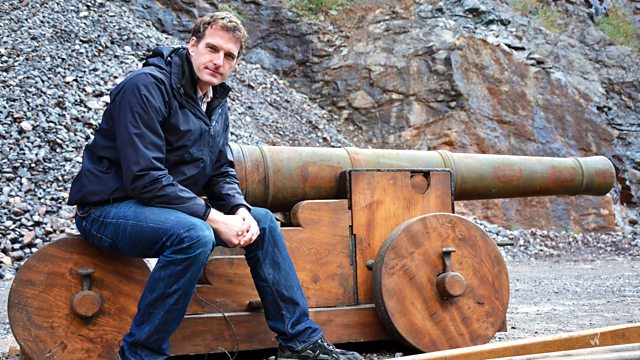New TV Formats: Where are the Boundaries?
Ten years ago, it was unthinkable to combine genres, to defy and blend different categories – but today it is very common, and even desirable, to produce hybrid genres. After more than twenty-five years following the emergence of cinema, we can see (un)successful tendencies to try to clearly define the line between fiction and documentary film and to advocate the uniqueness of the individual genres. But the present day does not favour definitions and boundaries. Boundaries are no longer respected, not only across different genres and branches, but also in everyday life. There is nothing easier than to defy boundaries, and it is no longer surprising. “Ten years ago, when I started working in Czech Television, there was a golden rule that genres couldn’t be mixed. Today, we can hear a completely opposite advice: ‘try to combine these and let’s see’. It is actually more important to tell the audience what they’re watching,” said media analyst Milan Kruml in the opening part of his workshop entitled The Boundaries of Film that took place in December.
Dramaturges play with TV viewers as they please. For example, a public service TV in the Netherlands recently managed to trick the whole nation. It was necessary to let people know that there were barely any organ donors signed up in the official registers. A fictitious reality show was created in which a dying woman was allegedly offering her kidney to three competitors. The winner’s prize was a kidney, plus the hope to live. The public protested against this concept even before the show was actually created. But the broadcaster persevered and didn’t reveal its actual intent. However, the presenter interrupted the show after the first thirty minutes and disclosed the show’s real purpose. He told the viewers that the main protagonist is played by a paid actress who was not dying, but that all of the competitors would really die if they fail to find the right donor. The donor registers filled up within three months.
TV pushed the boundaries and the lines between the employed genres have been blurred. Milan Kruml illustrated this fact on the apt example of a historical documentary: “The share of drama and staged components in historical documentary production is today large and the dramatic arc has also changed, together with the topics and the protagonists.” This was demonstrated on the example of a documentary about the most famous English battle of the 16th century. While five years ago, the author would first contact a historian and consult maps and paintings from the period, today, the BBC – when creating the Armada: 12 Days to Save England – chose a speculation: what would have happened had England lost this battle? The first scene of the documentary showed Elisabeth I waiting in prison for her execution. “If a documentary builds on the principle of an appealing spectacle, you will also attract those who wouldn’t otherwise have watched a historical show. On the one hand, it’s sad that the content no longer plays the main part, but this might actually be a plus. This way, you manage to provide information to a viewer group which would not have otherwise taken interest in the topic,” said Kruml advocating new documentary methods.

Armada: 12 Days to Save England
Kruml said that in general, documentary films about history, nature and technology sell very well. Social documentary production is a different chapter. “In the Czech Republic, mainstream TV production actually doesn’t bring up any social topics. This is partially due to the fact that the methods used to deal with the topics are still at their cradle. The question is how to make these topics approachable to people who wouldn’t normally be interested in them – the majority audience. These viewers are opposed to anything called ‘documentary’. Czech filmmakers have so far failed to make documentaries that would be attractive for the majority, whereas international producers came up with the docu-soap and reality-soap formats,” added Kruml.
The reality-soap format results from a staged situation that would not have naturally occurred, and then they follow what is happening. On the contrary, docu-soaps only observe the action without any external intervention. It is mostly about interesting places such as zoos or airports, where stories unfold automatically. For instance, a docu-soap set in the largest Swedish hospital has been running for seven years, five nights a week, on Swedish TV.
One example of a reality-soap show is BBC’s Festivals, Sex and Suspicious Parents (2014), which follows English teenagers partying in clubs and at festivals. Some of them didn’t even agree with the shooting and the material was subsequently shown to their parents. Voices objecting that the show is ethically controversial were disregarded and the BBC pointed to the fact that alcoholism in young people is a major problem and that parents should better supervise their children.
The UK has invented another method which would further blur the line between fiction and reality, the so-called “scripted reality”. This reality is created by omitting one of the basic documentary elements – a natural and not manipulated action. The environment and the protagonists are real, but their actions follow a specific script. The protagonists thus get an idea of where the plot should go – but it is entirely up to them how they do it. A very successful example of scripted reality is Made in Chelsea (2011) about wealthy Londoners.
“Today, anything can be employed as a creative principle, therefore it’s advisable to realise that regardless of the negatives of newly emerging methods, they enable us to deal with socially relevant topics in a way that has a great potential to appeal not only to documentary gourmets, but also to the majority audience,” concluded Milan Kruml.
The Boundaries of Film 2015 – video shot


